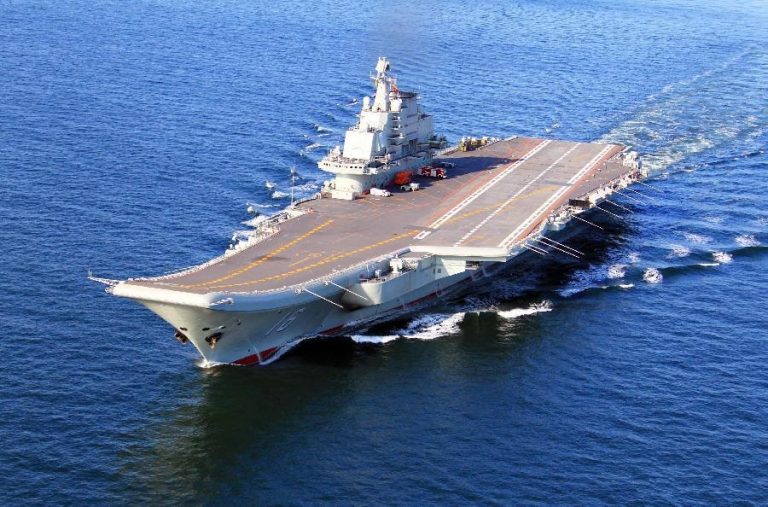
With the announcement of three technological advancements, China looks to flex its muscles again to maintain its hegemony
By Sujit Bhar
The New Year will bring in a new US President, a post-demonetisation reality for India, renewed vigour in Europe against terrorism and its fallouts, fresh groups of refugees from the freezing terrains of a devastated Syria and new worries of Brexit and the dipping British Pound.
There will also be an attendant irritant for the world: China’s new fangs.
Since it decided to consolidate its economy to morph into a “developed” country, China’s communist rulers have run random checks on international patience, issuing notices that have been greeted with wary observations from the West, especially from the Barack Obama administration. With the ascent of Trump to the post of Commander-in-Chief of the US, China wants to put in place early warning signs that it believes Trump would want to read as he takes oath of office on January 20.
This, obviously, is a reaction to Trump’s phone call to Taiwanese president Tsai Ing-wen after winning the US presidential election, but China has positioned itself so that the region in general has to sit up and take notice.
THREE SIGNS
Three things have happened in the recent past.
The only aircraft carrier that China has – the Liaoning – has moved into blue waters and international territory, raising the hackles of all neighbouring countries. The carrier, originally an Admiral Kuznetsov class multirole carrier called Riga, built for the Soviet Navy (originally commissioned in 1988), has been totally refurbished into what the Chinese call a Type 001 carrier.
China says it is letting the carrier test the waters, so to say, because an aircraft carrier needs to be in blue waters, but the flotilla of warships it has tagged along has not gone down well with other navies.
With the ascent of Trump to the post of Commander-in-Chief of the US, China wants to put in place early warning signs that it believes Trump would want to read as he takes oath of office on January 20.
Going out of the South China Sea, the carrier is said to be headed for the Indian Ocean and the rest of course is unknown. The ship was commissioned on September 25, 2012, and why this was a good time for the ship to be displayed to the world has been debated.
Japan has protested, so have countries in the region that have reported positioning of Chinese armed stations on man-made islands in the controversial region.
SPACE POWER
If that was a show of sheer military prowess, China has also been proactive in displaying its technological superiority in space. People’s Daily online has quoted a Xinhua news agency report, saying the country issued a white paper on December 27, outlining its policies that would make it a space power.

This is the fourth white paper the country has issued on its space programmes, the others being in 2000, 2006 and 2011. This white paper, titled: China’s Space Activities in 2016 was presented by China’s State Council Information Office at a press briefing. Wu Yanhua, deputy chief of the China National Space Administration, reportedly told reporters: “The white paper sets out our vision of China as a space power, independently researching, innovating, discovering and training specialist personnel.”
While China’s space programme started 60 years ago, it was only this year that April 24 was declared as National Space Day.
Apart from the usual propaganda narrative, such as “use of outer space for peaceful purposes”, “opposes the weaponization of or an arms race in outer space,” utilising of “space resources” in a “prudent manner”, “effective measures to protect the space environment”, to “benefit the whole of mankind” etc. the paper intends to showcase the technological advances the country has made.
It talks about the “smooth implementation of major projects such as manned spaceflight, lunar exploration, the BeiDou Navigation System and high-resolution earth observation system…” and also preens about how “the Long March carrier rocket series completed 86 launch missions, sending over 100 spacecraft into target orbit” between 2011 and 2016.
The timing of all this preening – especially when Space day is in April – is being watched by scrutinisers of international events.
Observers in India would want to match these with the capabilities developed by the Indian Space Research Organization, but the Chinese announcement coming so close to India’s successful test of its nuclear-capable Agni 5 solid-fuelled intercontinental ballistic missile (ICBM), is a case for worry.
CYBER POWER
The third issue that China has raised of late is about its cyberspace, a highly controlled environment. The Cyberspace Administration of China has just released what is called a security strategy for cyberspace which has advocated, quite expectedly, “peace, security, openness, cooperation and order”.
This 15-page paper goes on to talk about how the government will “guarantee cyberspace sovereignty and national security, protect information infrastructure and act against cyber terror and crimes.”
China has the world’s largest online population (about 700 million) and talks about how service producers and other organizations “will not be allowed to take advantage of privileged information or technology to compete unfairly or harm users’ interests”.
Considering that the sources of several recent hacks have been traced back to China, such words fall too glibly through generally terse officialese. When the document says “all countries should be respected in their Internet development and management, playing equal parts in cyberspace governance without hegemony or double standards, according to the strategy….” there is a sense of déjà vu.
It boasts that it has the world’s largest online population (about 700 million) and talks about how service producers and other organizations “will not be allowed to take advantage of privileged information or technology to compete unfairly or harm users’ interests”.
Zhao Zeliang, director of the CAC cyber security coordination bureau reportedly said: “This does not mean that we will refuse foreign products or services. Our requirements of security and controllability are not meant to raise barriers to foreign enterprises.”
While this sounds like a legitimate and logical business pitch, the inherent warning to the outside world regarding entry into China’s controlled cyber atmosphere was clear.
INFERENCE
If one has to draw an inference from the convergence of three strategic gestures by China, it would be this: The world around China should change as per the wishes of its Communist rulers. Also, if the promise of more money to the speedy development of the Gawadar Port is any indication, China has no intention of taking it easy on the international front.
Taking a break from the breakneck pace of growth of the last three decades, China wants a hand in every pie available.
Lead: Chinese aircraft carrier, the Liaoning. Photo: www.news.cn

